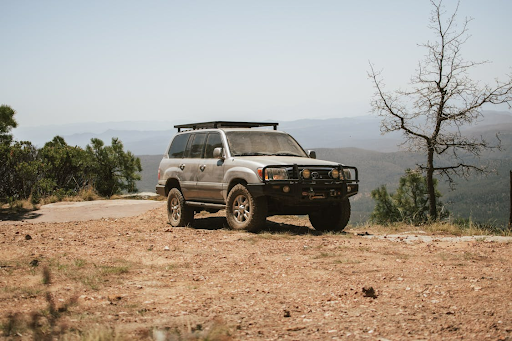Bull bars aren’t just slabs of steel bolted to the nose of a ute anymore. Sure, they still carry the weight of practicality—guarding radiators from kamikaze roos or shielding panels from rogue stumps—but their role has grown into something far more symbolic.
That Ford Ranger bull bar you’ve been using tells a story about you as the driver as much as it does about the rig. Think of it as armour, yes, but also as a badge: one that signals this vehicle isn’t built for car parks and school runs alone. The bull bar has stepped up from being mere protection to becoming a cultural symbol of ruggedness and freedom.
The Mechanical Backbone: Why Bull Bars Exist
Strip away the romance and you’re left with engineering at its core. A bull bar’s primary job is structural integrity, absorbing and redistributing impact forces so the chassis doesn’t wear the brunt. It shields vital organs like the radiator, intercooler, and steering components, which are otherwise one unlucky hit away from sidelining your trip.
From an engineering perspective, the bull bar isn’t just ‘a bar.’ Designers think in terms of load paths, directing energy away from weak points, while also considering crumple zones to keep safety systems working as intended. Materials matter too. High-tensile steel offers unmatched rigidity, while alloys bring weight savings and corrosion resistance. Both are engineered to deform in controlled ways, balancing brute strength with energy absorption.
The upshot? The modern bull bar is a carefully calculated piece of mechanical backbone—a quiet but critical player that keeps touring rigs alive when the going gets rough.
From Paddocks to Highways: The Bull Bar’s Evolution
The bull bar’s story starts in the paddocks, where farmers cobbled together heavy, square frames to keep cattle from turning bonnets into accordions. Back then, bars were little more than welded pipe and raw weight. They did the job but left plenty to be desired in design and safety.
As vehicles grew more refined, so too did the bars. Rough welds gave way to precision-folded steel, shaped by computer modelling to withstand stress in smarter ways. Aerodynamic profiles replaced boxy slabs, improving airflow and aesthetics. Most importantly, bars began to integrate seamlessly with vehicle electronics—airbags, parking sensors, adaptive cruise systems.
The evolution tells the bigger tale: the bull bar moved from backyard necessity to high-tech accessory. It’s still rugged, but now it’s engineered to complement modern vehicles, blending brute force with refined engineering.
Symbol of Preparedness: The Badge of Adventure
There’s something almost unspoken about what a bull bar says before the engine even turns over. Spot one on a rig and you know straight away that the driver’s not mucking around. It’s a signal of preparedness, a subtle declaration that says, “I’m ready for whatever’s down that track.”
Unlike alloy wheels or chrome trims, this isn’t just decoration. The bull bar is practical pride bolted to the front end. It speaks of river crossings that might need a winch, or the long dirt stretches where roos could appear from nowhere. It’s part of the off-roader’s cultural language, no words needed.
Function Meets Freedom: Practical Uses That Tell a Story
If you strip it down, a bull bar’s function extends well past stopping animal strikes. It’s a foundation for the gear that transforms an ordinary ute into a serious touring machine.
- Winches – your lifeline when bogged to the axles in clay or sand.
- Driving lights – punching through the inky black of outback nights, where high-beams alone don’t cut it.
- Antennas – vital for keeping comms alive when mobile service drops off the map.
- Underbody protection extensions – shielding steering arms and suspension links from rocks and ledges.
The Engineering Balancing Act: Strength vs. Compliance
Building a bull bar isn’t just about making it tougher than the next bloke’s. It’s about walking the fine line between strength and compliance. A bar that’s too rigid risks overriding crumple zones and upsetting airbag systems. Too soft, and it won’t protect what matters.
This is where engineering smarts step in. Designers use CAD modelling to simulate crash loads, material stress, and airflow dynamics. High-tensile steels and alloys are selected not just for strength but for their ability to deform in controlled ways. The bar must also manage airflow to radiators and intercoolers, critical for rigs towing in summer heat or crawling through low-range climbs.
The Bull Bar: More Than Metal, It’s a Mindset
The bull bar’s journey from crude farm-built guards to modern, engineered armour tells us one thing: it’s more than just metalwork. It’s a piece of kit that fuses engineering precision with cultural meaning. A bull bar doesn’t just protect radiators and panels—it declares intent.
Without question, bull bars have become a true badge of adventure. They’re not just bolted steel; they’re the handshake between driver and terrain, and the symbol of freedom sitting proudly on the front of every serious touring rig.

